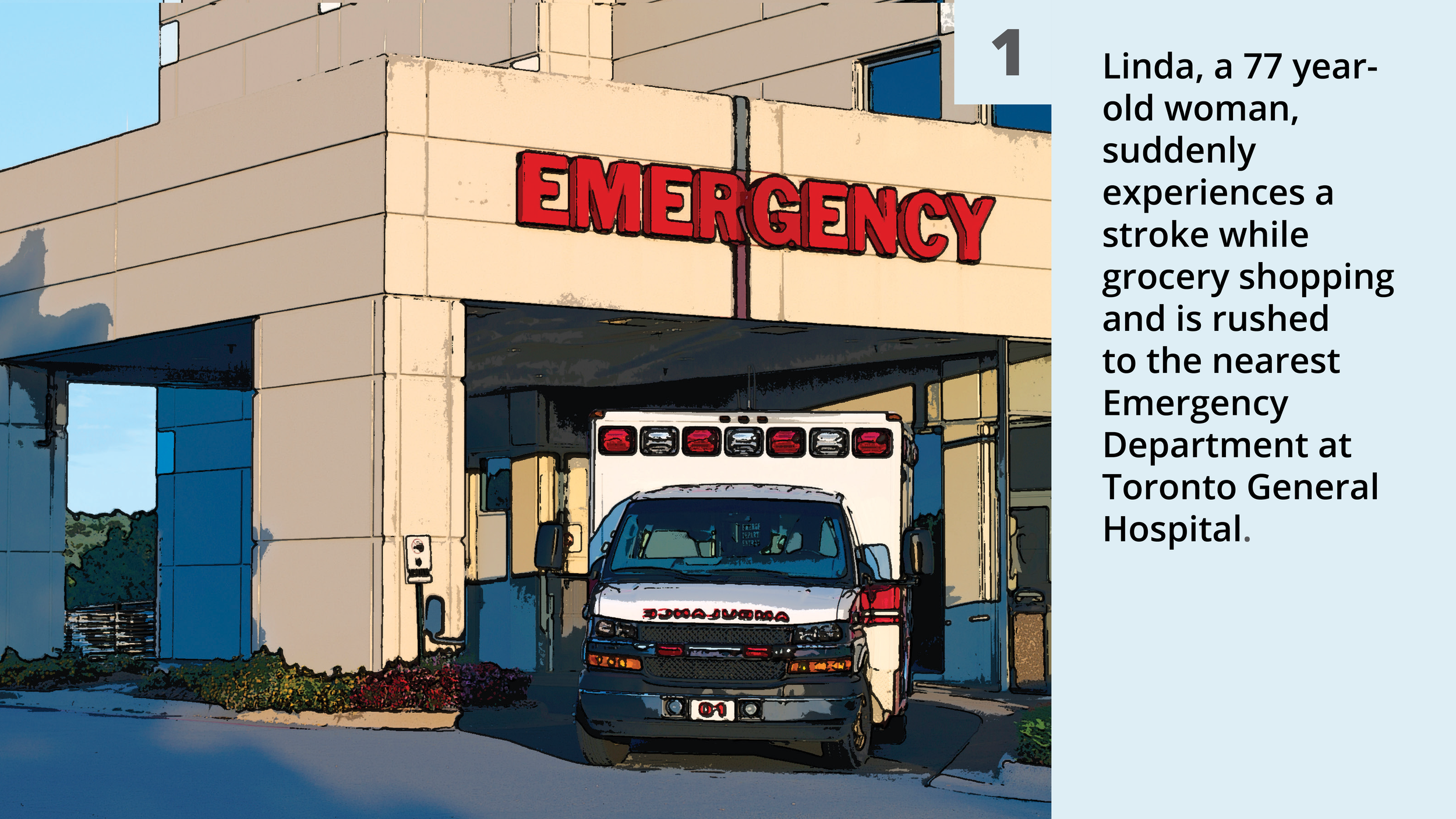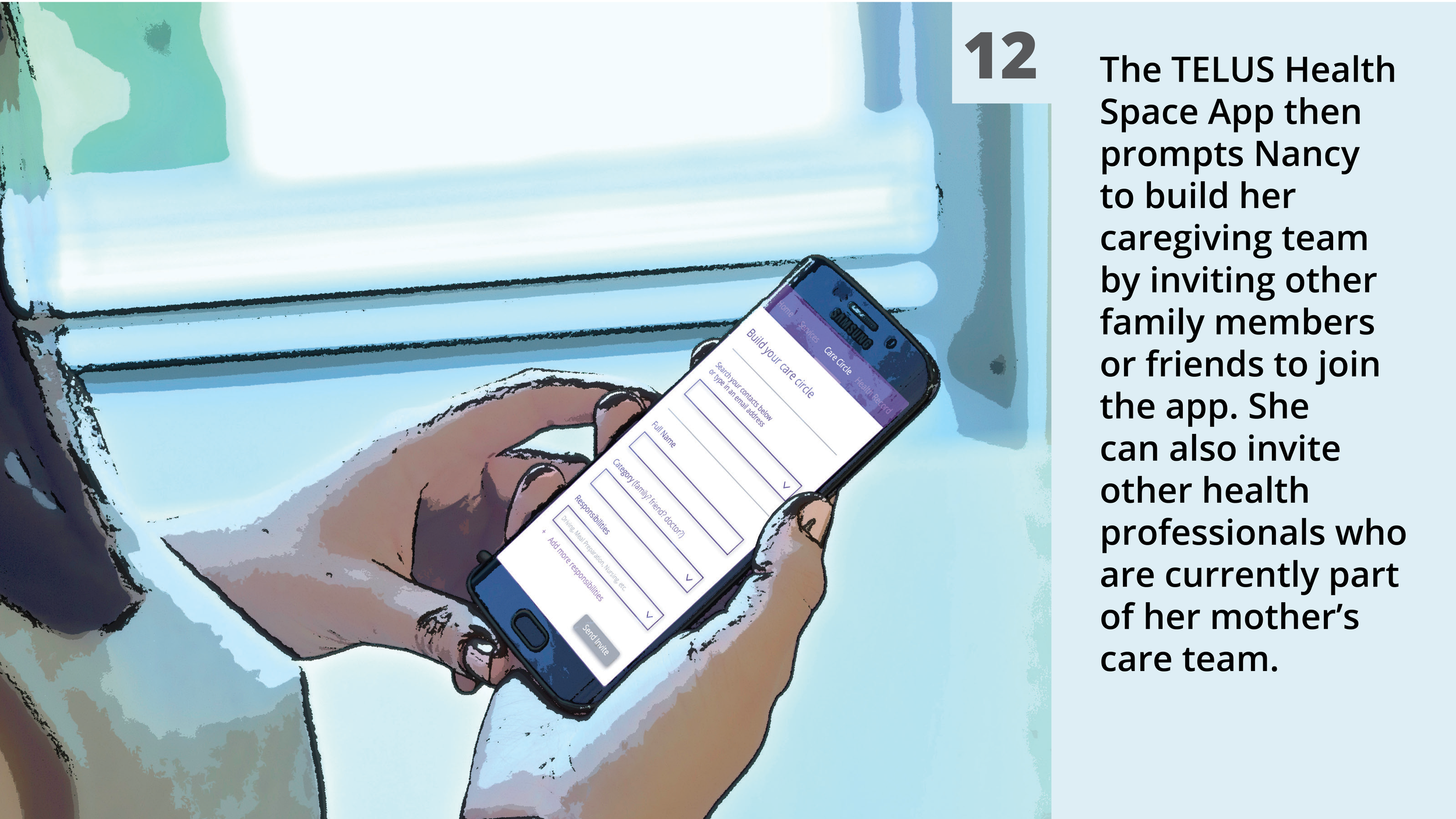Designing
Independent Aging
CLIENT
TELUS Health
SERVICES
UX Research, Co-Design, Qualitative & Causal Analysis, Strategic Design & Reporting,
Concept Development
MY ROLE
Design & Research Lead
HIGHLIGHTS
Research processes & results featured in the Human Factors Ergonomics in Healthcare Conference and Design Meets: Healthcare Edition

CHALLENGE
As the North American aging population is increasing, learning how to deal with the growing prevalence of chronic diseases and co-morbidities among older adults has become a focus of concern for our healthcare systems. Baycrest Hospital’s Centre for Aging & Brain Health Innovation (CABHI) in partnership with TELUS Health brought our team in to conduct primary research and co-design with elderly patients and their caregivers to better understand the lived experiences of this population and their circle of care with a goal of gaining critical insights that could inform the development of innovative, digital solutions to support their unique needs.
My role.
As Design & Research Lead:
managing a team of one human factors researcher and all client/partner relationships
developing and executing the qualitative research plan
facilitating in-person workshops with patients, caregivers & clinicians
analyzing qualitative data through causal and thematic analyses
identifying core UX principles, use cases and design strategies
translating research insights into technology features and functions
developing design concepts & facilitating stakeholder validation sessions
strategic report writing and presentation of results to project stakeholders
Understanding lived experiences.

PROCESS
In approaching this challenge, we conducted secondary and primary research with older adults living with multiple chronic conditions, including Mild Cognitive Impairment (MCI), and their family caregivers to understand the challenges they face and the needs that would need to be met to facilitate a future where they could age in place. This research informed the design and execution of two co-design workshops—one with research participants and the other with clinicians and other project stakeholders. Journey maps, research themes and technology cards were used as artifacts to facilitate group ideation during the workshops, resulting in prioritized design concepts.
Qualitative Research &
Causal Analysis
To start, secondary research was conducted through a detailed literature review that described the demographic and disease trends among older adults, independence among this population, this population's use and adoption of technology, and the intersection between technology, older adult independence, and caregiving. In building on the literature review, interviews were conducted with 5 subject matter experts in order to solicit a more nuanced understanding of the lived experience of older adults and the concept of "independence" among this population. This work supported the development of more rounded and detailed personas and helped to inform the primary research plan.
The primary research was carried out through ethnographic research methods with 12 participants (4 clinicians, 5 caregivers, 3 older adults) to gain a nuanced understanding of the lived experience, challenges, needs and values of three user groups: older adults, caregivers and clinicians.
Ethnographic methods consisted of a combination of shadowing, semi-structured interviews and contextual inquiry for each user group to better understand each participant’s needs and challenges within the context of their lived experience. We visited the homes of caregivers and older adults, as well as the clinical settings of participating clinicians, conducting our sessions on-site.
The incredible variability of factors that affect the lived experience of older adults living with chronic diseases and their caregivers are endless and daunting, fraught with complexity. In order to make sense of our initial thematic analysis, we mapped out our data points using causal loop diagramming to understand the causal relationships among multiple aspects of the research outcomes and gain a big-picture understanding
of the findings.


Co-Design
In shifting from a big picture understanding down to a more defined perspective, we were able to identify key findings to highlight and carry through to our first group co-design workshop. This resulted in 30 themes that were used during our first workshop with older adult and caregiver participants, where we facilitated participatory activities that informed a prioritization and iteration on these into five ultimate, overarching themes.
We translated our findings into a journey map that was used as a tool for collaborative idea generation during the following co-design workshop. This journey map illustrates the variety of themes that were discovered through the research, represented through experience of two core personas developed as a result of our primary research, showcasing real-life occurrences and challenges. Technology cards were also created as part of a market scan we conducted and used as points of inspiration and realistic integrations for idea generation.
Insights to enable independence.

OUTCOME
The key findings were translated into a core value proposition and set of design principles, delivered through a comprehensive research report and client presentation. After also analyzing the TELUS products and platforms, a set of recommended features and functionalities was developed that the new design solution should offer, as well as highlighting user value offerings as a form of success criteria. An ultimate technology concept design was created that could meet the key needs that were uncovered through the research findings. Proposed as an extension to the current Telus Health Space, this concept tackles one of the main challenges around managing the caregiver role in providing effective functionalities for communication, scheduling and task management.


Our team developed a storyboard narrative to illustrate the design concept using our finalized personas and part of their story from the earlier journey map. The storyboard illustrates a potential use case for the 'TELUS Health Coordinator' design concept through an end-to-end service scenario. This was presented during the final validation workshop to help elicit participant feedback and learn which features and functionalities were of most value to them.
Our final deliverable consisted of a web-based strategic report that summarized all of the findings from the research, including value propositions, technology features and functionalities, actionable design principles, as well as a detailed design concept package.























